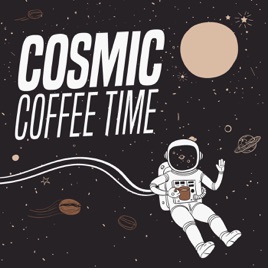
Advertise on podcast: StarDate
Rating
4.6 from
Country
This podcast has
10 episodes
Language
Publisher
Explicit
No
Date created
2017/10/06
Average duration
3 min.
Release period
1 days
Description
StarDate, the longest-running national radio science feature in the U.S., tells listeners what to look for in the night sky.
Podcast episodes
Check latest episodes from StarDate podcast
Rigel
2024/02/25
The brightest star of Orion stands due south at nightfall, marking one of the hunter’s feet. Rigel shines blue-white — a dramatic contrast to orange Betelgeuse, Orion’s second-brightest light.
Both stars are supergiants — stars that are among the biggest and heaviest in the galaxy. Rigel, for example, is up to a couple of dozen times the mass of the Sun, and perhaps 70 times the Sun’s diameter. But the different colors tell us that the surface temperatures of Rigel and Betelgeuse are quite different. Betelgeuse is much cooler than the Sun, while Rigel is thousands of degrees hotter.
That may be an indication that they’re in different phases. Both stars are destined to end their lives as supernovas — powerful explosions that leave only dense, crushed cores.
But it’s still not clear how that plays out. Astronomers aren’t sure if a supergiant first becomes red, then evolves to a blue phase, or does things in the opposite order, or oscillates between phases. It’s also possible that some supergiants explode while they’re red, while others go out while they’re blue. Either way, both stars are doomed.
Bright blue Rigel is more than 850 light-years away. That’s a long way for a star that’s visible to the eye alone — and especially for one that bright. It’s such a beacon because it’s hundreds of thousands of times brighter than the Sun — a big, hot, bright blue star with a brighter future.
Script by Damond Benningfield
more
First ‘Spacecraft’
2024/02/24
Since the dawn of the Space Age, in 1957, the United States and other countries have sent tens of thousands of objects into space — some into orbit, and others far beyond. Yet the first object known to have reached space did so well before the Space Age — 75 years ago today. It didn’t go into orbit, but it did reach 244 miles — well above the altitude needed to reach “outer space.”
The flight was conducted by the U.S. Army, at White Sands Proving Grounds in New Mexico. At the end of World War II, the American military captured tons of parts from Germany’s V2 rockets. It also captured key German rocket experts, including the most prized of all, Wernher von Braun. He later led the development of the rockets that sent American astronauts to the Moon.
The military built its own versions of the V2, and started launching them in 1946. Early flights took the first pictures that showed Earth’s curvature, and carried fruit flies to study the effects of rocket flight.
On February 24th, 1949, the military launched a mission known as Bumper 5. It consisted of a V2 first stage, and a small second stage. It reached the highest altitude recorded up to that time, and the greatest speed — 5,150 miles per hour. And although its main goal was to study the rocket itself, it also studied the upper atmosphere and beyond — the first observations made from outer space.
Script by Damond Benningfield
more
Moon and Regulus
2024/02/23
The United States and China plan to build permanent bases on the Moon. For the people who inhabit those bases, daily life will be quite different from life on Earth.
For starters, the Moon’s gravity is only one-sixth as strong as Earth’s. So just walking will take some getting used to — a big step inside the base could result in a bump on the head.
There’s no air on the Moon. Without it, there’s an extreme range in temperature. At the equator, it can range from about 250 degrees Fahrenheit at noon, to more than 200 below zero at night.
A day on the Moon lasts about 28 Earth days. That means an average of two weeks of daylight, followed by two weeks of darkness — an arrangement guaranteed to mess with the body clock.
From the side of the Moon that always faces Earth, there’d be something else that might take some getting used to: Earth would always hang at the same point in the sky, day and night. So you could watch Earth go through the same cycle of phases as the Moon does as seen from Earth. Earth is bigger and more reflective than the Moon is, though, so it would be quite a sight.
Earth would be hard to see tonight. That’s because the Moon is full — it lines up opposite the Sun in our sky. Earth is between the Moon and Sun, so it’s new, so no portion of the Moon-facing side is in the sunlight.
The full Moon has a bright companion tonight — Regulus, the brightest star of Leo. It stays close to the Moon all night.
Script by Damond Benningfield
more
Asteroids
2024/02/22
By far the most numerous objects in the solar system are asteroids — chunks of rock, metal, and ice. Scientists have discovered more than 1.3 million of them. They range from a few feet across to a few hundred miles. Most of them reside in the asteroid belt, between the orbits of Mars and Jupiter.
Until a few decades ago, the number of known asteroids was just a few thousand. But some asteroids can come close to Earth, possibly endangering our planet. So scientists launched big searches to find as many as possible. As the searches continue, the known asteroid population goes up by tens of thousands every year. Fortunately, almost all of the asteroids are no danger to Earth.
There are three major classes of asteroids. The most common are class C — they contain a lot of carbon. They account for roughly three-quarters of all asteroids. Next is class S. These objects are rich in silicon, so they’re like a lot of the rocks on Earth. And class M asteroids contain a lot of metal.
The largest object in the asteroid belt is Ceres — about 600 miles in diameter. It was the first asteroid ever discovered. Today, it’s classified as a “dwarf planet.” But when scientists study the overall story of asteroids, they still include Ceres.
Despite their numbers, asteroids don’t add up to much. Their total mass is only three percent of the mass of the Moon. So they’re basically little chips floating through the solar system.
Script by Damond Benningfield
more
Vermin of the Skies
2024/02/21
Attitudes can change. That’s as true in science as in anything else. Today, asteroids are considered some of the most interesting objects in the solar system. But that wasn’t always the case. They went from eagerly sought, to absolutely despised. In fact, one astronomer called them the “vermin of the skies.”
Asteroids are chunks of rock, metal, and ice. Most of them reside in a wide belt between the orbits of Mars and Jupiter.
Astronomers first began looking for something in that region in the early 1800s. They noted that there was a mathematical progression in the distances between the Sun and the planets. But there was a gap in that sequence between Mars and Jupiter. So they launched a dedicated effort to find something.
The first asteroid was discovered on the first day of the 19th century. Several others soon followed. But there were so many that they eventually became a problem. They streaked across photographs of the sky, ruining some of the pictures. That made them “vermin.”
Today, though, asteroids are a lot more interesting. More than a million of them have been discovered. They’re leftovers from the early solar system, so they hold clues to the formation of Earth and the other planets. They might have brought water to the young Earth. And some of them can pass near Earth, endangering our planet. So it’s important to know as much as we can about them — big boulders that could be much more than just vermin.
Script by Damond Benningfield
more
Moon and Pollux
2024/02/20
Pollux, the brighter of the “twin” stars of Gemini, is a giant. It’s expanded to about nine times the diameter of the Sun — a beach ball to the Sun’s golf ball. That’s made Pollux much cooler than the Sun, so it looks orange. And it’s more than 30 times brighter than the Sun.
Careful measurements of its diameter, combined with measurements of subtle “ripples” across its surface, have yielded the mass of Pollux as well: 1.9 times the Sun’s mass. Astronomers have combined that with measurements of its weak magnetic field to learn about the history of Pollux.
In its prime, the star was class “A” — two classes brighter and heavier than the Sun. Its surface was much hotter then, so Pollux glowed pure white. And it rotated much faster than it does now, so it generated a stronger magnetic field. That means Pollux would have been much more “active” than it is today — producing more magnetic storms on its surface, and more explosions of particles and energy.
Because Pollux was so massive, though, it burned through the hydrogen fuel in its core in a big hurry. That triggered the changes that make the star what it is today. So even though Pollux is less than 20 percent the age of the Sun, it’s moved beyond the prime of life into “gianthood” — a stage the Sun won’t reach for billions of years.
Look for Pollux quite near the Moon this evening. Its “twin,” the star Castor, is a good bit farther from the Moon.
Script by Damond Benningfield
more
Venus and Mars
2024/02/19
The planets that flank Earth huddle close together in the dawn sky over the next few days. Venus and Mars are quite low in the east-southeast during the waxing twilight, so you need a clear horizon to spot them. And binoculars wouldn’t hurt.
Venus is the second planet out from the Sun, Earth is third, and Mars is fourth. Their orbits are separated by tens of millions of miles. Yet all three worlds are inside the Sun’s “habitable zone.” That’s the distance from the Sun where the temperature is just right for liquid water on the surface of a planet — or could be.
Venus is far too hot for liquid water. And Mars is too cold. When the planets formed, however, conditions could have been different. There’s evidence that oceans could have covered much of the surfaces of both planets.
Over the eons, though, conditions changed. Venus’s thick atmosphere trapped heat from the Sun, making the planet hotter. It got hot enough to bake out gases from the rocks, making Venus even hotter. Mars, on the other hand, lost much of its atmosphere. Today, the air is much too thin for liquid water to last for more than a few minutes. That leaves only Earth as a comfortable home for life — in the middle of the habitable zone.
Venus is the “morning star.” Fainter Mars is below it tomorrow, and closer on Wednesday and Thursday. After that, they’ll separate, with Mars climbing a little higher each day, and Venus dropping into the Sun’s glare.
Script by Damond Benningfield
more
Snake’s Head
2024/02/18
Hydra, the water snake, is the largest of all the constellations — and by far the longest. It spans more than 100 degrees — almost a third of the way around the sky. So it takes a long time to climb into view. Tonight, for example, its head is in the east-southeast at nightfall. It’s well to the left of Sirius, the brightest star in the night sky. But the snake’s tail won’t climb into view until after midnight.
The head consists of five or six faint stars, depending on how it’s drawn. Most of them are so faint that they’re not visible from cities, or even the suburbs. Five of them share a name: Minazal. It comes from an Arabic phrase that means “belonging to the uninhabited spot” — an indication that they’re not much to look at.
The Minazals are numbered, based on their position in the head. The brightest is Minazal 1. It’s a binary — two stars locked in orbit around each other. The system is about 160 light-years away. Its main star is about three times the size and mass of the Sun, and dozens of times brighter. The companion is smaller and fainter.
The closest of the Minazals is number three, at 135 light-years. And the farthest is number 2, at almost 600 light-years. As seen from Earth, it’s the faintest member of the quintet. In reality, though, it’s the brightest — more than 2500 times brighter than the Sun — the most impressive star in the head of the water snake.
Script by Damond Benningfield
more
Moon and Taurus
2024/02/17
The Moon slides along one of the horns of Taurus tonight. At nightfall, the bull’s bright eye, the star Aldebaran, is to the lower right of the Moon. And the tip of the horn, El Nath, is closer to the left or lower left of the Moon. By the time they set, in the wee hours of the morning, El Nath will stand close above the Moon.
The Moon is in its “waxing gibbous” phase. “Gibbous” means the Sun is lighting up more than half of the lunar hemisphere that faces our way. “Waxing” means that more of that half is being lit up every night. The Moon will keep getting “fatter” until it’s full, a week from today.
“Gibbous” comes from a Latin word that means “hump.” It can be applied to anything that appears to have a hump on its back, such as a camel. A gibbous Moon appears to have a hump on top of its round half.
Planets can appear gibbous as well. Mercury and Venus are inside Earth’s orbit around the Sun, so they can follow the same cycle of phases as the Moon — from thin crescents to almost full. We don’t see them as new or full because, during those phases, they’re passing between Earth and the Sun, or behind the Sun.
Planets outside Earth’s orbit never appear in a crescent phase, but they can appear gibbous, depending on our viewing angle.
Stars, on the other hand, are always full. They generate their own light, so the viewing angle doesn’t matter — unlike the Moon, which will have a “hump” on its back for another week.
Script by Damond Benningfield
more
Moon and Pleiades
2024/02/16
The Sun’s birthplace has long since fallen apart. The Sun almost certainly was born in a cluster, with anywhere from dozens to thousands of siblings. Over a few hundred million years, though, the cluster fell apart, with all of the stars going their own way.
We can see that process at work in the best-known star cluster of all: the Pleiades. The cluster is close to the Moon tonight. Its brightest stars form a tiny dipper. It may be a bit hard to pick out through the moonlight, but binoculars will help.
The cluster is about 445 light-years away. It’s about a hundred million years old. And it consists of more than a thousand stars.
But the cluster is already starting to break up. It’s held together by the gravity of its stars. But that “stickiness” is overpowered by the gravity of the rest of the galaxy. It pulls at the Pleiades, causing the stars to spread out. Stars at the edge of the cluster are pulled out into their own orbits. That reduces the cluster’s overall gravity, making it easier to strip away even more stars.
Most estimates say the Pleiades is likely to completely fall apart over the next 250 million years. By then, several of its brighter stars will have expired. Those stars are especially heavy, so they “burn” through their nuclear fuel in a hurry. By the time the Pleiades disintegrates, only their dead cores will remain — remnants of a once-mighty cluster.
Script by Damond Benningfield
more
Podcast reviews
Read StarDate podcast reviews
guitarsandbeaches
2022/09/04
Great Podcast
One of my favorite astronomy podcast.
Gary5419
2021/11/05
Interesting
Interesting without being boring. The narrator speaks clearly. Lots of concise information.
MaybNexYr Bear fan 77
2021/04/05
Amazingly good
Just pure enjoyment each day
Moshe b Abraham
2020/11/18
As Short as it is Fun
Love how it quickly and calmly touches on what overhead now. And at times explores deep insights. But never monopolizes my time.
tgsmith0
2020/05/08
Views
Billy and gang:
The show views outward from our "rock" are very educational. Thanks!
The shows views and thoughts on our management of our "rock," ear...
more
Banbit
2020/06/03
The voice
Love listening.... I have for decade’s... Billy is great, but I miss the woman that narrated for years... her voice the difference
skipjack_margot
2019/11/03
I grew up on this show
Sandy Wood made my life on this earth just a little bit better!
Masterofdisaster
2019/07/20
Best wishes Sandy Wood
I have enjoyed listening to the show since long before the days of pods. Your top-notch narration has always been part of that. While I am sure the ex...
more
Susan Trishel Monson
2019/07/04
Sandy Wood 💫💙💫 #legend
Thank you Sandy Wood for your decades of silky, insightful and always delightful narration of the night sky. You are a trailblazer, icon, legend & a t...
more
hayyim99
2019/05/04
Black Holes
This podcast was like listening to a 1930’s serial drama on the radio.
In the 100 years since General and special relativity were released, Hilbert, ...
more
Podcast sponsorship advertising
Start advertising on StarDate & sponsor relevant audience podcasts
You may also like these astronomy Podcasts

5
2
10
The Scoobi N Chooi Show
Scoobi N Chooi show

0
0
39
Poussière d'étoile
Ripley Media

0
0
28
Evrim Ağacı TV: Canlı Bilim Yayınları
Evrim Ağacı

0
0
5
Firstory Demo Show
Firstory

0
0
52
OCTAVO DÍA
Cabina Digital

0
0
50
Sciences et vous
RTL

5
4
3
So...Space?
So...Space?

0
0
120
Astronomía Autodidacta
Carlos Andres Carvajal Tascon

5
1
43
Indian Genes
Joaquim Gonsalves

5
1
63
Cosmic Coffee Time with Andrew Prestage
Andrew Prestage



